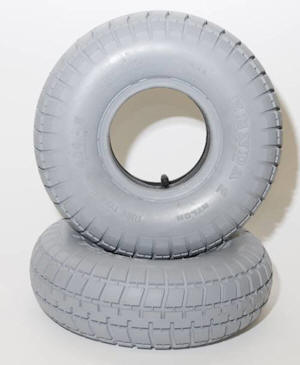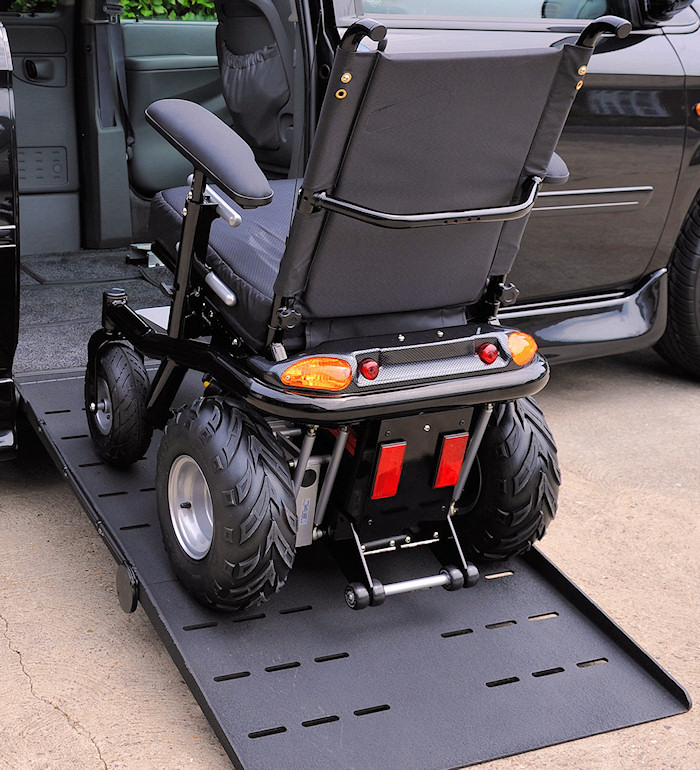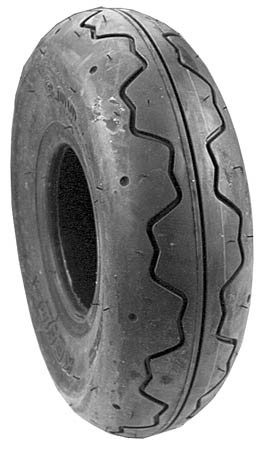|
Welcome
1. POWERCHAIR
ONLY:
Detailed Full PowerChair Related ONLY Menu HERE
2. VEHICLE
ONLY:
Detailed Wheelchair Accessible Vehicles ONLY menu HERE
3. EVERYTHING
ELSE:
Detailed Menu of Everything else HERE!
MY OWN
VEHICLES:
Dodge
Grand Caravan
VW Caravelle VR6
MY HOME
BUILT ULTIMATE POWERCHAIRS:
My
SLIGHTLY Modified
Improved Powerchair
Part
1 |
2 | 3
|
4 |
5 |
6
My VERY Modified Off Road & All terrain DO ALL
Powerchair!
Part 1
| 2 |
3
MISCELLANEOUS
POWERCHAIR RELATED:
What
Goes Wrong Power Wheelchairs
Powerchair Tyres
>
Drive your Powerchair by Radio Control
Powerchairs & Range
Off Road DO ALL Indoor & Outdoor Powerchairs
Off Road ONLY Outdoor Powerchairs & 4x4
Page
1
|
2
Manual or Electric Wheelchair?
Why ALL Powerchairs
NEED to be Off Road Capable!
Choosing a Suitable Powerchair
Wheelchair Width
BATTERY
AND ELECTRICAL (POWERCHAIRS & SCOOTERS + MOTOR VEHICLES):
Batteries for Both Vans & Power Wheelchairs
Inverters & Chargers
Very flexible charger!
Charging Batteries
Fast Charge Your Power
Wheelchair
Which batteries to buy
"DRIVE
FROM A WHEELCHAIR" VEHICLES:
Dodge
Grand Caravan 1
Dodge
Grand Caravan 2
Dodge Grand Caravan 3
Dodge Grand Caravan 4
Latest 2008 2009 2010
Disabled Converted Dodge Chrysler And Voyager Minivans
Chrysler Voyager
Entervan Diesel
Suzuki Wagon R
More Here
Mercedes Vito
-
soon!
Kia Sedona - soon!
INSURANCE:
Modified Disabled
Vehicle Insurance
Breakdown Cover
USED VEHICLES & OTHER
EQUIPMENT:
Disabled Adapted Cars
WHEELCHAIR TRANSPORT
& DRIVE BY TRANSFERRING:
VW Caravelle
Dodge
Grand Caravan can be used to transport up to 4 Wheelchair Seated Occupants
Fiat Doblo
Renault Kangoo
-
soon!
Citroen Berlingo - soon!
Citroen Dispatch
- soon!
Kia Sedona
-
soon!
Volkswagen Sharan
Mercedes Vaneos
Toyota Hiace
Fiat Multiplas (Wheelchair
passenger travels in the front)
Kangoo ASSIST (wheelchair
passenger transfers & drives)
ESSENTIAL DISABLED
EQUIPMENT STUFF:
Understanding
Grabbers
Puncture proof tyres
Run Flat tyres
Tyre Weld Aerosol
Fuses!
Spare Key
Wheelchair Ramps
Small Generator
Tools!
VEHICLE ADAPTATIONS:
Control
Systems etc
Hand Controls Manual
Hand Controls Electronic
Van / Car Door openers
Van / Car Wheelchair Tie Downs
OTHER STUFF:
Used Disabled Equipment for sale
How to lose weight FAST!
Email about modifying powerchairs
Keep it looking new 1
2
My Accident!
Climate Change
Electric
Cars are a Joke!
Disclaimer
& About Me
Site
Map
Contact
Links
|

Power Wheelchair (Electric Wheel Chair, PowerChair) Tyres.
Detailed PowerChair Only Menu
On the face of things a pretty simple subject? Well no
frankly... Well it can be, if you don't care and anything will do!
But some of us care about comfort, punctures, longevity, grip,
controllability and even how they look! A powerchair to its
user is his/her legs after all. Wherever you go you are seen with it. It
is associated with you like it or not.
|
|
Where to begin... Grey (Gray) tyres.
Personally I hate them. Nothing could look worse than turning up to a business
meeting/wherever dressed smartly and being sat in a dirty brightly coloured
wheelchair with grey tyres shouting "look at me". Nobody will take you
seriously. My van, my powerchairs and my clothes are all black. I
like black!
And you see this grey tyre? It will be
a discoloured yellow/brown soon even on the shelf. Black ones just need a
wash and if you are really fussy a quick coat of "tyre foam" to always look
brand new.
 ALL of
my powerchairs are
black. The idea is that a super clean black powerchair shouts
nothing! Its not really noticed. Do you want people to see you or a
wheelchair? Well again a super clean black powerchair with grey tyres shouts
"disability" to everyone. That is why I hate them the most. ALL of
my powerchairs are
black. The idea is that a super clean black powerchair shouts
nothing! Its not really noticed. Do you want people to see you or a
wheelchair? Well again a super clean black powerchair with grey tyres shouts
"disability" to everyone. That is why I hate them the most.
That said not everybody cares about how
things look. But there are other reasons. Grey tyres are
missing an important ingredient that is the reason 99 percent of the worlds
tyres are black. Carbon which is created by the incomplete combustion of
oils mostly. It is used to improve wear characteristics and to colour tyres.
Without it the rubber has lower tensile strength making it wear faster by
crumbling tearing and ripping on the road as it has less elasticity.
|
As such I have a pile of old grey
tyres here that have been removed from my own and plenty of other's
wheelchairs over the years. They have all gone a yucky brown/yellowy colour as
they rapidly do but they all exhibit the same "dryness" a few months after
fitting and crumble away rather than wear normally. You can pull bits off them!
So can the road. The reason people/manufacturers use grey tyres
is exactly because they have no evil carbon to mark paints and carpets.
Personally I have been using black tyres for 12 years now and live in a fully carpeted house. These are brown and grey carpets. There
are no black marks on my carpets anywhere. The only time black tyres seem to
leave black marks is if either the tyre or the carpet is damp. Even slightly
damp and it does happen. It wipes away with a carpet cleaner solution and a
cloth. But if you take care and use common sense its really a non issue and It
has not happened for about 5 years once I realised what caused it!
They do leave marks on paints
if you are clumsy enough to hit them but I don't anymore. I learned to be
careful|! Of course with a mid
drive powerchair with four casters swinging around in front and behind you this
is harder to achieve. Another reason I prefer rear drive powerchairs. In any case it wipes
away with a damp cloth. I have brown, and grey carpets though. You might
want avoid them if your house is full of white carpets!
Your Choice. Reasons to use black?
They look much better and contrary to what you will read
elsewhere they definitely wear better and age slower. They are available from
non "mobility" sources and are therefore subject to more competition and are
usually hugely cheaper! I buy mine on eBay complete with tubes, wheels etc for
about 1/4 of the cost that a grey "mobility" tyre would have cost me. They are available in tubeless variants with the huge
benefit that this brings regarding punctures (or lack of) if your wheels allow
and in more sizes and tread patterns than you would believe.
|
|
Tubed type? Or tubeless...
For most powerchair users there is no
choice. You are stuck with the type of wheels you are lumbered with
by short sighted manufacturers. It is worth reading this so that next time you
are looking for a powerchair you are fully armed with information.
I personally
converted my powerchairs
to take tubeless type wheels because the benefit to a paraplegic user is huge!
Punctures! Or rather a lack of them. I changed my powerchairs wheels so I could
take advantage of black (see above) cheap, tougher (4 ply and stronger
construction) TUBELESS tyres.
The thing I dread the most is getting
a flat in a strange rainy town in the cold at 2am on the way home. I
am paraplegic so getting out and walking isn't an option! Tubes pop like a
balloon because that's what they are. They tear and or expand around any object
that punctures them. With a tubeless tyre a small puncture simply doesn't matter
as the tyre itself is the tube and they don't tear or expand around the hole...
The sealing rubber is bonded to the inside of the tyre. So if
the object stays in it doesn't leak. Usually if it comes out then it still
doesn't leak as the hole seals itself as its fixed to the tyre. Or if it does
you get the "slow puncture" syndrome that means its an inconvenience that you
can fix later rather than a disaster!
The added "gunk" or
tyre seal that is often added to seal
punctures by wheelchair manufacturers as an expensive option seldom actually
works on tubes either. For the same reasons. The hole stretches and expands
under pressure and the sealer cant seal it. It works great on tubeless tyres
though!
What difference does this all really make? Lots. Between 1998
and 1999 I had around 10 rear wheel punctures, from glass, nails etc. Since
changing to tubeless tyres which are both less likely to get a puncture and
less likely to deflate when they do, I have not had a single one. Ask
yourself why don't the manufacturers do this for us? They don't get it?
They don't care? They don't evolve? Or they don't understand. Most likely
its a lack of interest or real competition in their industry. That's why
almost zero real progress happens year after year. |
Rear wheels. Solid tyres. Foam Filled or inserts? I avoid these
like the plague.
Solid, Foam Filled, Inserts, OR PNEUMATIC type? |
Correct Powerchair Tire (Tyre)
Pressures?
The manufacturers offer these at great expense as a solution
to the flat tyre problem. They are harder to "push" and therefore waste battery
power and increase the average depth of discharge of your batteries and
therefore shorten their life at the same time as giving you and your back a
horribly harsh ride. Why do you suppose cars and motorcycles don't use solid
tyres? If you like that sort of thing then go for it! But my back or my
batteries cant stand it...
What they should do is
fit proper tubeless and puncture resistant tyres like these
below (as I am currently fitting to
this
powerchair) But that would mean some improvement and some progress! Some evolving... They
don't seem keen on that. They give a nice smooth ride, don't tire
batteries, and are al but impossible to puncture.
Maybe they would need to get some made in grey. That would mean a phone call. And some tubeless wheels. All available off the shelf
mind. No, tubes will be ok for the disabled -- they were for the last 30 years!
They don't know the difference! Well some do. And the more
people that read this the better.

Puncture
resistant tyre casing medium |
Puncture resistant
tyre casing large
The
best type of tread pattern/tyre size/type for your drive wheels?
Ideally if you only ever go on dry grass, roads or pavements or carpets then you
need a "slick" type tyre. That is one with NO tread pattern.
They wear better, roll easier, don't damage lawns or carpets as you turn, and
are less prone to punctures. These are pretty hard to come by in the sizes we need
for powerchairs so the next best thing is something like this below

tyre medium
|
tyre
large
In grey (if that's your thing) or in
black (and also in all but puncture free tubeless in this case on my own
powerchairs) as shown on my
recently built powerchair here. Because there's no chunky tread to tear up
carpets or make a noise on pavements. And because they last forever... These
ones are brand new 3.50 x 8 tubeless scooter tyres. 15 inches diameter total.
Actually fitted to cheap trailer wheels. But they are perfect tyres and tread
pattern for pavements and indoors. They can of course be used with a tube too.
And in many cases they can replace the 3.00 x 8 tyres on many standard
powerchairs too. Its only 6mm or a quarter of an inch bigger top and bottom!
If you go off road or on wet grass etc then you might want some
with a tread pattern a bit more like this:

145-70 - 6 off road &
15x6.00 - 6 lawn tyre medium |
145-70 - 6 off road & 15x6.00 - 6 lawn tyre
large
I am currently building a powerchair that will use
these. here But its just
the type of tread we are interested in the not the size. The ones laid down and
far left are for sand, loose stuff and for mud. They will work ok too on roads
and pavements and even in the house if you take care. The The one stood up
is designed for grass (wet or dry) and pavements. It will also be ok in the
house too. In your own size remember. We are just looking at tread patterns! You
only need go this wide if you are going to the beach or a muddy field.
Or if you want a smooooth ride. Those huge sidewalls and the low 4 to 5
psi pressure that these large volume tyres need to support you have other
benefits apart from grip! They deform around objects or bumps. Better than
any suspension we have on powerchairs. That's the reason I am building
this powerchair
here
Caster Wheels
Caster wheels should always be rounded in profile and smooth.
And preferably tread FREE in an ideal world. Even on an
off road powerchair... I have seen a large
number of clueless dummies and that includes some manufacturers who fit "off
road" style caster wheels (tyres) to off road powerchairs. They do it probably
unthinkingly but its just wrong! A perfect caster would be a hover wheel with NO
grip.
 Because
a castor does not "want" grip!
Its job is to simply go exactly where it is pushed
whatever direction that may be. Tread or any extra grip just hinders its
operation and wastes battery power and upsets and steering response more than a
smooth caster would have done. Ideal caster for all on or off road powerchairs
is a tread free (or as close as you can get) rounded profile tyre. Because
a castor does not "want" grip!
Its job is to simply go exactly where it is pushed
whatever direction that may be. Tread or any extra grip just hinders its
operation and wastes battery power and upsets and steering response more than a
smooth caster would have done. Ideal caster for all on or off road powerchairs
is a tread free (or as close as you can get) rounded profile tyre.
What NOT to buy opposite
for any caster >>>
unless you don't
quite understand basic physics...
Rounded profile
because otherwise as it comes up to an edge at a slight angle (a
raised paving slab alongside you for e.g.) it will bounce away rather than ride
up it. The bigger and fatter the castor wheel the nicer the ride and the easier
time the caster wheel and you have.
Mine are 9 inch (measured) and a claimed 10 inch and about perfect for every outdoor/indoor dual
purpose powerchair. Actually they are 3.00 x 4 tyres. In black of course since
they are £20 for 4 with tubes! (About 1/5th of the price of mobility grey
ones...)
What to buy for your caster wheels.
You are mostly looking
at the shape of the tyre here not the size! The size is whatever fits your
chair. And smaller is better indoors and bigger is better outdoors. And wider is
better off road... I am using these on my off road powerchair since they
are almost smooth so work good indoors and out and off road.

Caster fork being drilled
medium |
caster fork being drilled
large
Ignore the drill! (image from a different page on this site) I buy
these tyres 4 at a time cheaply from eBay. Look up 3 x 4 tyres... Minimoto
tyres, mini bike tyres etc. The wheels too were about 20 UK Pounds for 4
of them. I use them on my home built/modified powerchairs
here

Correct tyres for a true indoor/outdoor wheelchair here on my powerchair!
 For what its worth I 1/3rd fill my caster
tyres and rear tyres with tyre seal
(an off road version) . The seal goo is thicker for off road vehicles so stands
some chance of working even on a tubed tyre if its a third full! This
stuff works better on tubeless but it does offer some protection with tubes too. For what its worth I 1/3rd fill my caster
tyres and rear tyres with tyre seal
(an off road version) . The seal goo is thicker for off road vehicles so stands
some chance of working even on a tubed tyre if its a third full! This
stuff works better on tubeless but it does offer some protection with tubes too.
Front caster wheel tyres. Opposite, these 3.00 x 4 (9.5
inches diameter) are ideal for indoor / outdoor use on or off road.
>>>
Menu:
Detailed PowerChair Only Menu
Related:
Powerchair Tyre Pressures What
should they be and why?
Tyre
Weld Aerosol Punctures.
We just love those! At least get et a can
of tyre repair foam today!
Puncture Proof Tyres I
mean real puncture proof, like the military use.
NOT solid, foam filled, inserts or and of
the other "mobility solutions" that jar your spine every few feet outdoors.
There are better ways.
Powerchair Tyres
A page discussing the types of powerchair tyres we
have, can get, and which are best and why. Advantages and
disadvantages of each type. So you know what to look for or to swap over to!
Powerchair Tyres Solids or
Pneumatic?
Advantages and disadvantages of each type. Which should you fit?
Run Flat Tyres for your car or
van.
|
|